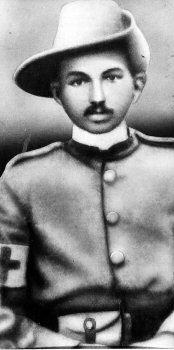
The India-Pakistan War of 1971 turned the INS Vikrant into one of India’s shining #war heroes but #didyouknow that this legendary aircraft carrier started life as the HMS Hercules in the Royal Navy? That didn’t stop her from winning glory for the #IndianNavy! 1/10
#navalhistory
#navalhistory

It seemed as if the Vikrant - India’s first aircraft carrier - would never see action. She was 28 years old when she played a pivotal role in the ‘Bangladesh War’ of 1971; she was in poor shape; and her speed was just 25 kmph, almost half her designed speed. 2/10
#Indianhistory
#Indianhistory

But this didn’t stop the old #warship from undergoing sea trials and the rigorous training of her crew, air squadrons and their pilots, in preparation for the impending #war that pitted #India against #Pakistan for the liberation of East Pakistan, or #Bangladesh. 3/10
At midnight on 3rd December 1971, the Vikrant was deployed near Chittagong when hostilities broke out. The next day, six jets from her squadron of Sea Hawks attacked the Chittagong and Cox’s Bazar harbours, sinking or damaging most of the merchant ships berthed here. 4/10 

The river ports of Khulna, Changla and Mongla were also hit by the Vikrant and devastated. This was followed up with an attack on the cantonment area of Chittagong on 14th December, which destroyed several Pakistani Army barracks. 5/10
In just 11 days, over 300 sorties were flown by aircraft from the Vikrant and were instrumental in establishing control in the Bay of Bengal, superiority in East-Pakistani airspace and also a naval blockade to prevent supplies and trade coming in from West Pakistan. 6/10
The fact that she wasn’t in the best condition when she went into battle and yet played such a crucial role in India’s victory in the war demonstrated the tenacity, determination and skill of the Vikrant’s officers, crew and pilots. 7/10
Yet very few know that the Vikrant was not always, well, the Vikrant. She was built in 1943 as the HMS Hercules during #WWII by Britain’s #RoyalNavy but the war ended before she was completed. She stayed with the Royal Navy till she was bought by India in 1957. 8/10 

The Vikrant underwent modifications in Belfast until 1961, when she was finally completed by Harland & Wolff, the same shipbuilder that built the #Titanic! She formally joined the Indian Navy Fleet in the Bombay harbour on 3rd November 1961. 9/10 

The Vikrant stayed docked in the #Bombay harbour and was decommissioned in 1997. She was preserved as a #museum ship until 2012. In 2014, the old warhorse was sold via an online auction and scrapped later that year. 10/10
• • •
Missing some Tweet in this thread? You can try to
force a refresh















